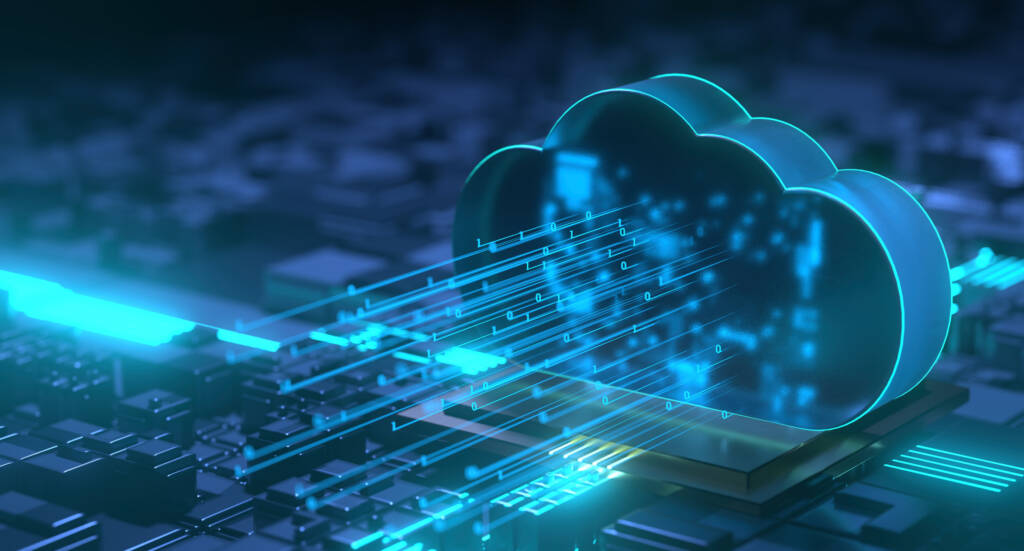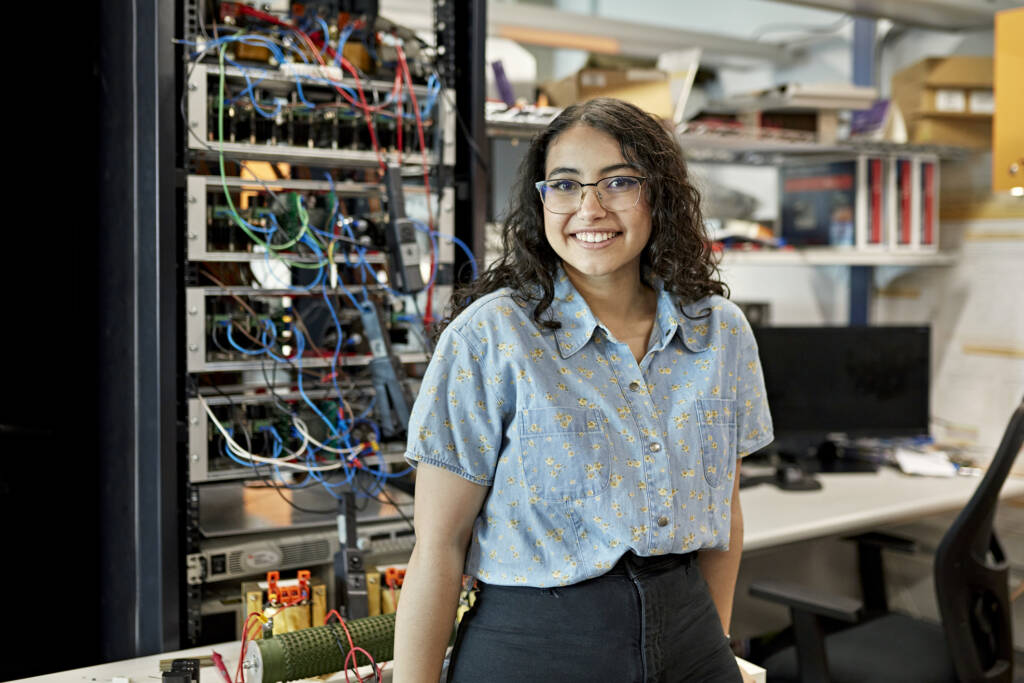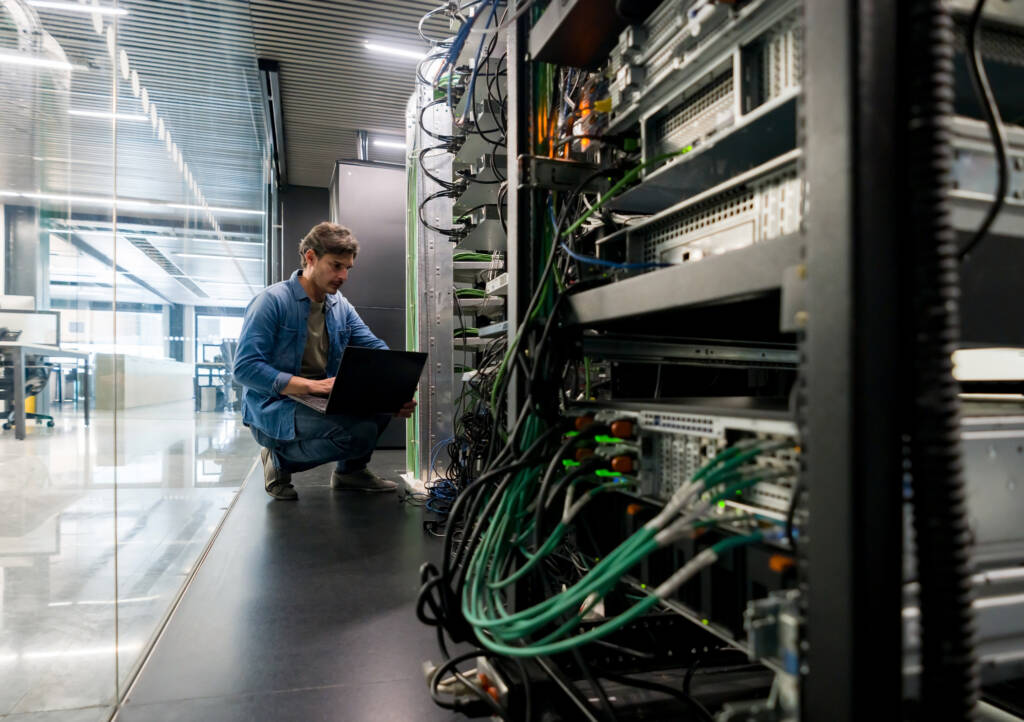
Cloud Technologies and the Internet of Things

First, we had the internet of computers. Then with the advent of email and social media, along with mobile technology, it became the internet of people. Today’s world is increasingly becoming the internet of things. With advances in battery power, sensors, and computer chips, more and more devices are being connected to the internet. This will allow them to be monitored, controlled, and used more effectively for people and businesses. This course will examine the trends and opportunities surrounding the Internet of Things. Students will learn about the technologies, hardware, and software that underpin the Internet of Things. The course will examine a variety of end-market applications in our homes, businesses, and cities. Finally, students will learn about the many career opportunities that the Internet of Things will enable.
During this course, you will learn career-related skills and earn a badge for this accomplishment. A badge is a digital certification of your career-related learning that you can share on social media or with higher education platforms, colleges, potential employers, peers, and colleagues. Select this link to learn more about badges.
Major Topics and Concepts
In Module 1 What is the Internet of Things? students will:
- Define Internet of Things (IoT), machine-to-machine, and “smart” machine
- Identify key trends that are driving technological development: miniaturization, affordability, and de-wireization
- Evaluate Moore’s law and Metcalf’s law and describe how they have contributed to the growth of connected machines
- Recognize the number of connected devices globally and predict the growth of connected devices
- Examine the impact that artificial intelligence, fog computing, and blockchain technology will have on the growth of IoT
In Module 2 The Internet and the Cloud students will:
- Outline the history of the internet and the world wide web
- Define cloud computing and fog computing and explain how they work
- Identify key contributors to internet and cloud computing technology
- Differentiate between the internet and the internet of things
- Describe the technology adoption curve and examine examples of adoption such as the internet and mobile phones
- Discuss the impact the internet has had on industries such as mail delivery and bookstores
In Module 3 IoT at Home students will:
- Define key terms related to IoT applications in the home
- Describe use cases of the Internet of Things within a house
- Evaluate how the use of IoT in home systems such as heating, cooling, and sprinklers can improve resource efficiency and reduce maintenance problems
- Discuss the benefits and drawbacks of relying on connected devices within the home
- Evaluate the challenges of reliability on connected devices that may malfunction, run out of batteries, or be hacked
In Module 4 IoT and People students will:
- Define wearable technology and describe how wearable technology relates to the internet of things
- List and describe key sensors used in various wearable applications
- Describe applications of wearable technology across fitness & sports and business
- Examine the potential risks of utilizing wearable technologies
- Evaluate how wearable technology can contribute to digital distraction and what students can do to increase focus and attention
In Module 5 The Industrial IoT students will:
- Define key terms related to the Industrial IoT
- Examine companies and projects that are utilizing the Industrial IoT
- Discuss how IoT technologies will enable Factories to become more efficient
- Identify the risks associated with ransomware attacks on the IoT
- Identify career opportunities in the industrial internet of things and educational paths to enter those careers
In Module 6 IoT in Healthcare students will:
- Define key terms related to Healthcare IoT
- Describe use cases of the Internet of Things in healthcare, including: blood pressure monitors, blood sugar monitors, in-home medication dispensers
- Examine how IoT technology can be used track and monitor contagious diseases
- Evaluate key risks associated with the IoT and connected devices
- Discuss the importance of data collection in healthcare and describe how IoT devices collect and process data
- Identify career opportunities in the IoT at Healthcare industry and educational paths to enter those careers
In Module 7 IoT and Cars students will:
- Describe applications of the Internet of Things in cars, including tire pressure monitoring, connected cars, and driverless car sensors
- Identify key technologies that enable self-driving cars (Lidar, radar, other sensors)
- Define algorithm and explain how algorithms allow self-driving cars to operate
- Compare the benefits and limitations of utilizing sensors and artificial intelligence in transportation
- Determine the impact of robots on jobs in transportation
- Identify career opportunities in self-driving cars and educational paths to enter those careers
In Module 8 IoT at the Store students will:
- Define key terms related to IoT applications in retail
- Describe use cases of the Internet of Things in stores
- Examine how the IoT will impact the supply chain of how products are delivered
- Identify and discuss risks, including privacy and security, with the use of IoT in stores
- Discuss the impact of IoT on jobs in retail and the environment
- Identify career opportunities in IoT Retail and educational paths to enter those careers
Module 9 IoT and Farming students will:
- Define key terms related to IoT applications in agriculture
- Describe the change in agriculture employment from 1900 to today and the causes of the change
- Describe use cases of the Internet of Things in farming
- Discuss the challenges of feeding a growing global population and how improvements from IoT can help with this challenge
- Examine how the use of IoT applications in agriculture could produce environmental benefits
- Identify career opportunities in Agricultural technology and educational paths to enter those careers
Module 10 IoT and Cities students will:
- Define key terms related to IoT applications in cities
- Describe use cases of the Internet of Things within cities
- Evaluate the impact of smart cities on public sector jobs
- Discuss the potential for smart cities to impact the environment positively or negatively
- Examine efforts by companies and governments to address risks and concerns of the Internet of Things
- Identify career opportunities in the IoT and Cities industry and educational paths to enter those careers
Competencies
The Internet of Things
Students will demonstrate an understanding of the internet of things by describing trends driving technological developments in the internet of things, explaining contributions of Moore’s and Metcalf’s laws towards connecting devices, and evaluating complications to the growth of connecting people and things on the internet.
Internet and the Cloud
Students will demonstrate an understanding of the internet and the cloud by explaining contributors to internet and cloud technology, explaining the connection between internet and the cloud to the internet of things, and explaining the impact of the adoption curve of technology.
Internet of Things in the Home
Students will demonstrate an understanding of the internet of things in the home by evaluating the use of smart devices in the home, explaining pros and cons of the internet of things in the home, and describing career opportunities in the industry of internet of things in the home.
Internet of Things as Wearable Technology
Students will demonstrate an understanding of internet of things as wearable technology by explaining advantageous uses of wearable technology, explaining disadvantages of using wearable technology, and explaining career opportunities in the industry of internet of things in wearable technology.
Internet of Things in Industrial Manufacturing
Students will demonstrate an understanding of the internet of things in industrial manufacturing by explaining the use of the internet of things in industrial manufacturing, evaluating the efficiencies and risks of the internet of things in industrial manufacturing, and explaining the career opportunities in the industry of internet of things in industrial manufacturing.
Internet of Things in Healthcare
Students will demonstrate an understanding of the internet of things in healthcare by analyzing applications of the internet of things in healthcare, describing the risks of the internet of things in healthcare, and explaining career opportunities in the industry of internet of things in healthcare.
internet of Things in Cars
Students will demonstrate an understanding of the internet of things in cars by describing application of the internet of things in cars, comparing the pros and cons of self-driving cars, and explaining career opportunities in the industry of internet of things in cars.
Internet of Things in Stores
Students will demonstrate an understanding of Internet of things in stores by evaluating applications of the internet of things in stores, analyzing the pros and cons associated with the internet of things in stores, and explaining the career opportunities in the industry of the internet of things in stores.
Internet of Things in Farming
Students will demonstrate an understanding of the internet of things in farming by explaining the applications of the internet of things in farming, explaining the pros and cons of the internet of things in farming, and explaining career opportunities in the industry of internet of things in farming.
Internet of Things in Cities
Students will demonstrate an understanding of the internet of things in cities by evaluating the application of the internet of things in cities, comparing pros and cons of the internet of things in cities, and explaining career opportunities in the industry of the internet of things in cities.

